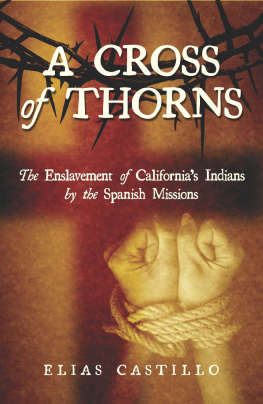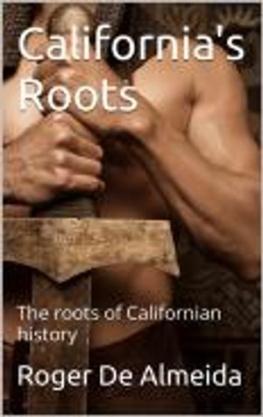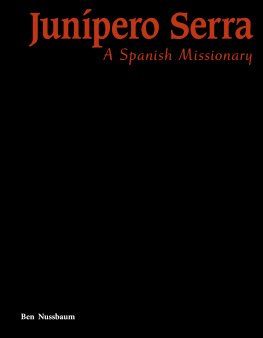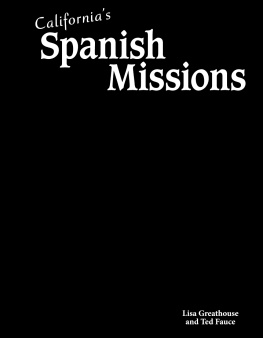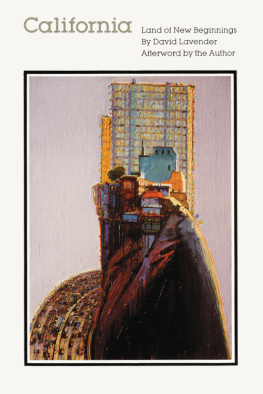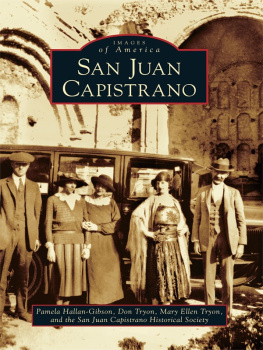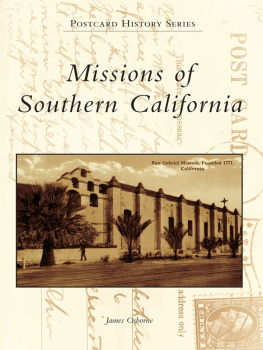A C ROSS OF T HORNS
The Enslavement of Californias Indians by the Spanish Missions
A DVANCE PRAISE FOR
A C ROSS OF T HORNS
Mr. Castillo tells a story of which far too many people are simply not aware, the enslavement of California Indians under the mission system. While many Americans know of the Trail of Tears and other Indian atrocities, most do not know of the atrocities perpetrated on Indian people in California. A Cross of Thorns sheds light on this period in history.
Ben Nighthorse-Campbell, U.S. Senator, retired
A Cross of Thorns pulls back the veil of lies, deceit, and cover-ups that has been perpetuated for nearly two hundred years.
from the Foreword by Valentin Lopez, chair of the Amah Mutsun Tribal Band of the Costanoan/Ohlone Indians
Veteran journalist Elias Castillo has written a searing examination of the brutality and exploitation of the California mission system. A Cross of Thorns is brave, unsparing and ambitious, a tour de force that is one of the most significant contributions to this important topic.
Jon Talton, author of the David Mapstone Mysteries, the Cincinnati Casebooks and the thriller Deadline Man
Elias Castillos A Cross of Thorns throws the light of truth on a shamefully dark chapter in American historythe brutal treatment of Native Americans subjugated and forced into slave labor conditions for the prosperity of the California missions.
Ron Miller, former television critic for the San Jose Mercury News, author of Mystery! A Celebration, and co-author of Masterpiece Theatre
A C ROSS OF T HORNS
The Enslavement of Californias Indians by the Spanish Missions
Elias Castillo

Fresno, California
A Cross of Thorns
Copyright 2015 by Elias Castillo. All rights reserved.
Cover images copyright Shutterstock.
Published by Craven Street Books
An imprint of Linden Publishing
2006 South Mary Street, Fresno, California 93721
(559) 233-6633 / (800) 345-4447
CravenStreetBooks.com
Craven Street Books and Colophon are trademarks of
Linden Publishing, Inc.
ISBN 978-1-61035-242-0
eISBN 978-1-61035-257-4
135798642
Printed in the United States of America on acid-free paper.
Library of Congress Cataloging-in-Publication Data on file.
Contents
I most gratefully acknowledge the endless patience and support I received from my wife Cathy and the invaluable guidance of my agent, Michael Hamilburg. Encouragement and help was received gratefully from Michael Cronk and Diane McNutt, Joanne Jacobs and John Wakerly, Linda and Robert Faiss, Ron and Darla Miller, Daniel Bauer, William and Kathie Briggs, Dennis Rockstroh, and Peter Unsinger.
I also owe a debt of gratitude to the University of Californias Bancroft Library, Mexicos Archivo General de La Nacin, and the Santa Barbara Mission Historical Archive for their dedication in preserving the documents, records and letters of the mission era, providing the critical proof and insight that was needed to complete this book. Finally, my heartfelt appreciation goes to Stanford Universitys Cecil H. Green Library, as well as to the California Room of the San Jose State University Dr. Martin Luther King Jr. Library for its magnificent collection of books documenting Californias mission era.
U ntil now, the true and full history of the California missions has never been told. When visitors tour the missions, they are usually presented with stories and images of peaceful, loving priests and soldiers who treated the Indians as adored children.
These stories belie the truth of the missions, where Native Americans suffered under harsh and brutal conditions. As a young boy, I listened to stories from my elders about the cruelty of the missions. There were tales of how native women were capturedwith their thumbs tied together with leather straps to form human chainsand marched forcibly from their tribal lands to the missions. If the Indians did not cooperate, the soldiers, at times, killed them. In one incident, more than two hundred women and children of the Orestimba tribe (living near what is now the town of Newman) were being taken to Mission San Juan Bautista. When, after passing the summit at the Orestimba Narrows, these women refused to go any farther, the Spanish commander ordered the women and children killed with sabers and their remains scattered.
The oral traditions of our tribal band, the Amah Mutsun, taught us stories of how certain Spaniards would appear when the Indians were first brought into the missions so they could get their pick of the young girls and boys for their perverted appetites, always with the tacit approval of the priests. Our elders told us that because the soldiers at the Monterey Presidio were raping so many of the Indian women and girls at Mission Monterey, the priests moved the compound to Carmel.
While many California Indians were raised knowing the history of the missions from the Native perspective, we were unaware of the history of the Franciscan priests or the Spanish and Mexican governments. A Cross of Thorns tells us, in a comprehensive way, how the priests conspired to enslave the Indians and ignore the goals of the Spanish Crown and, subsequently, the Mexican government. This book documents how the Roman Catholicism of that era viewed the Indians of the New World as heathens whose faith was based on entities it considered demonic. The Spaniards who went to the New World were initially only interested in obtaining wealth and then returning to Spain. But as the empires regional power grew, the Spanish crown wanted to protect its land and thwart Russian expansion into California. Therefore, the Spanish (and, later, Mexican) government sought to use the Indians as a labor force to support their various goals, not the needs of the church. But in time it was the church which had the greatest impact on the lives of the Indians.
A Cross of Thorns pulls back the veil of lies, deceit, and cover-ups that has been perpetuated for nearly 200 years. It provides irrefutable evidence, which the author, Elias Castillo, has painstakingly footnoted so there can be no question as to its veracity. It is this evidencethis truththat Californias church-owned missions must address in order to publicly confront the terrible deeds that were committed.
Each year at Mission San Juan Bautista, more than forty thousand fourth graders take field trips to see the historical site. The children learn, incorrectly, that the missions treated the Indians with love and warmth. To this day, nothing at the mission describes how over eighty-four tribes were taken to this mission and how very few survived. Records show that thousands of Indians died there during the mission era.
The California State Department of Education helps perpetuate these lies. School textbooks covering California history, required at all elementary schools in the state, never describe fully how there were over four hundred tribes at first contact with the Spaniards. They describe inadequately how these tribes lived, how they prayed, or their special relationship with Mother Earth. Nor do they discuss how the missions were responsible for killing 40 percent of all California Indians. The history books also describe Father Junpero Serra as a loving, peaceful man with only one concerncaring for the Indians.
Rather than tell these lies, the history books should teach how Father Serras principal goal was to baptize as many Indian souls as he could in his lifetime. In his letters, Serra described the Indians gods as demonic, and considered the Indians to be barbarous pagans. He wrote that only Catholicism could save the Indians from evil, believing that punishment was important to rid the demons from their souls. For this reason, natives were lashed regularly, sometimes so severely that death followed.
Next page
